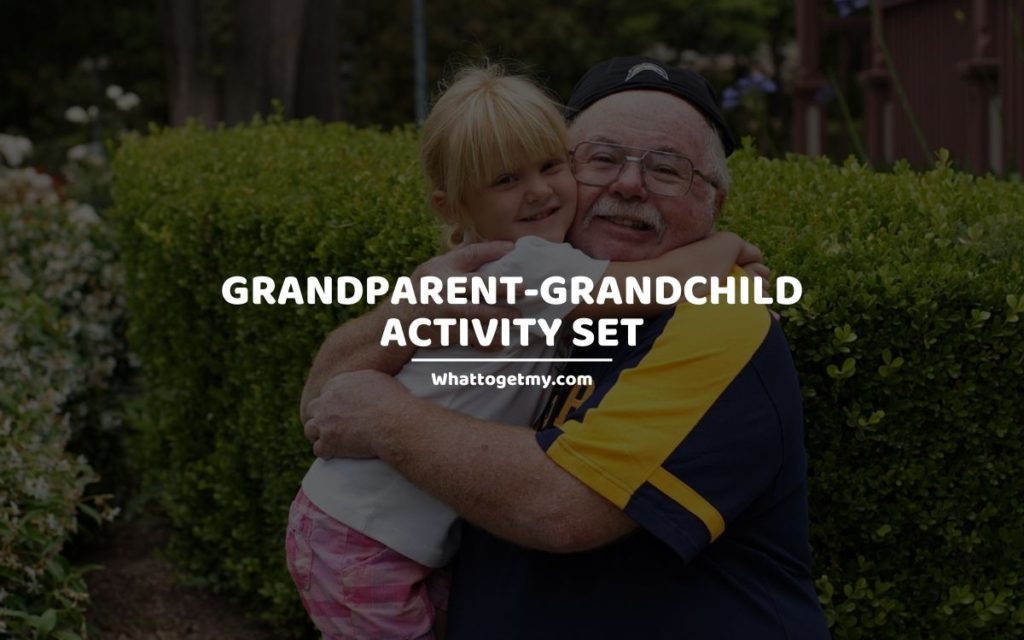How to Help Students with Learning Disabilities in The Classroom?
WhatToGetMy Instructional Article
Let’s start by saying that we can’t tell you how to help students with learning disabilities in the classroom because every student is unique and requires special care. However, we can offer you useful advice and some tips that helped a lot of people. Your teaching strategies should be based on the individual needs of the student and the objective of your course.
All children need love, encouragement, and support. Kids with learning disabilities are not different. You might need to take a different approach but the ultimate goal is the same – you should support and encourage them to learn.
Before we get to the tips, we’d like to mark a few points:
- The best thing you can do for your students is to ensure they develop a strong sense of self-worth and confidence.
- Students with learning disabilities are not unable to learn. You just need to apply different learning strategies tailored to their distinctive abilities.
- Your job is to show the students how to help themselves and teach them how to learn.
- Students look up to their teachers and your behavior has a big impact. Try to teach by example and match your words with your behavior.
- Always give students feedback. Emphasize what they’ve learned so far and how well they’re doing. You can also encourage working on a specific area more, but don’t give harsh criticism.
What are learning disabilities?
To learn how to teach special education students, first, you need to know what learning disabilities actually are. A learning disorder is an umbrella term that can signify a lot of different learning problems such as difficulties with listening, speaking, reading, writing, and solving mathematical problems.
Every kid has trouble with school performance occasionally. However, if a certain aspect of learning is consistently problematic, it might mean that the child has a learning disorder. Some traits, when combined, can be indicative. For example, you can suspect a learning disorder if the kid is easily distractible and confused or has difficulties following directions, high frustration level, low self-esteem, the inflexibility of thought, etc.
Troubles with learning are not the result of a lack of motivation, bad behavior, or lower intelligence. Kids with learning disabilities are just as smart as everyone else. Some can also have above-average intelligence. Their brains simply function differently, so they receive and process information in unconventional ways. That’s why it’s crucial to take a different approach when teaching and find something that fits every student individually.
Define expectations
Teaching special education students should start by setting clear expectations. You need to let kids know what exactly is expected of them and why. If kids know why the study material is important and what are the learning goals, they’ll have fewer troubles with committing to learning.
This applies to both lectures and tests. Don’t ask vague questions and expect straight answers. Clearly define classroom expectations and test instructions. You can also ask students to repeat the instructions to get rid of any confusion. Offer both written and oral formats to make sure that everyone can understand you.
If you’re a college professor, try to provide a detailed and easily understood course syllabus. If it’s possible, break the material into small pieces so that the learning process becomes easier. Every material needs to be available and students should have all the needed resources. Explain the grading system, set due dates, and talk about the material you’ll cover throughout the school year. If you clearly lay out the course’s goals, students will understand your expectations which will make them more likely to perform better.
Let them know you’re there
When you’re teaching students with special needs, you need to let them know you’re there. Make sure all students know you’re reachable. Just a couple of sentences can be enough to encourage students to seek help. Your job is to create a comfortable learning environment and being approachable and honest is a good start.
In college, it’s a good idea to add a statement in your syllabus inviting students to meet you (or to email you), so you can discuss their needs. Let your students know you’re open to suggestions. For example, you can encourage students with dyslexia to record the lectures and discuss confusing parts together.
Figure out how the student learns best
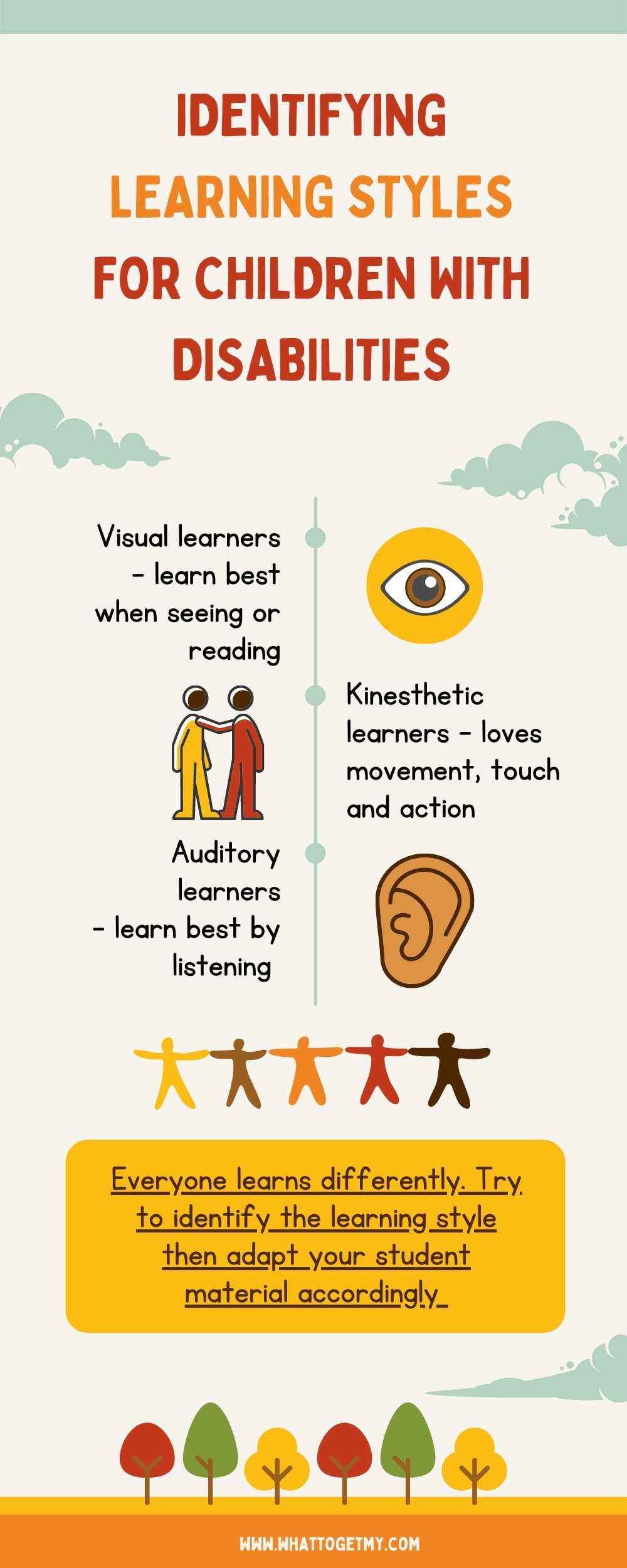
Source Link: https://whattogetmy.com/help-students-with-learning-disabilities-in-classroom/
Everyone learns differently. Some people absorb information by listening, others by reading and repeating. Try to identify the learning style of your students with learning disabilities, so you can adapt your class material accordingly. When you figure out what engages the kids properly, take some of the steps below to incorporate specific types of learning into your teaching style.
Remember that it’s always better to focus on the students’ strengths and not their weaknesses. A learning disability means that one area of studying might be difficult, so figure out what approaches work better. Nurture the activities in which students excel.
Visual learners
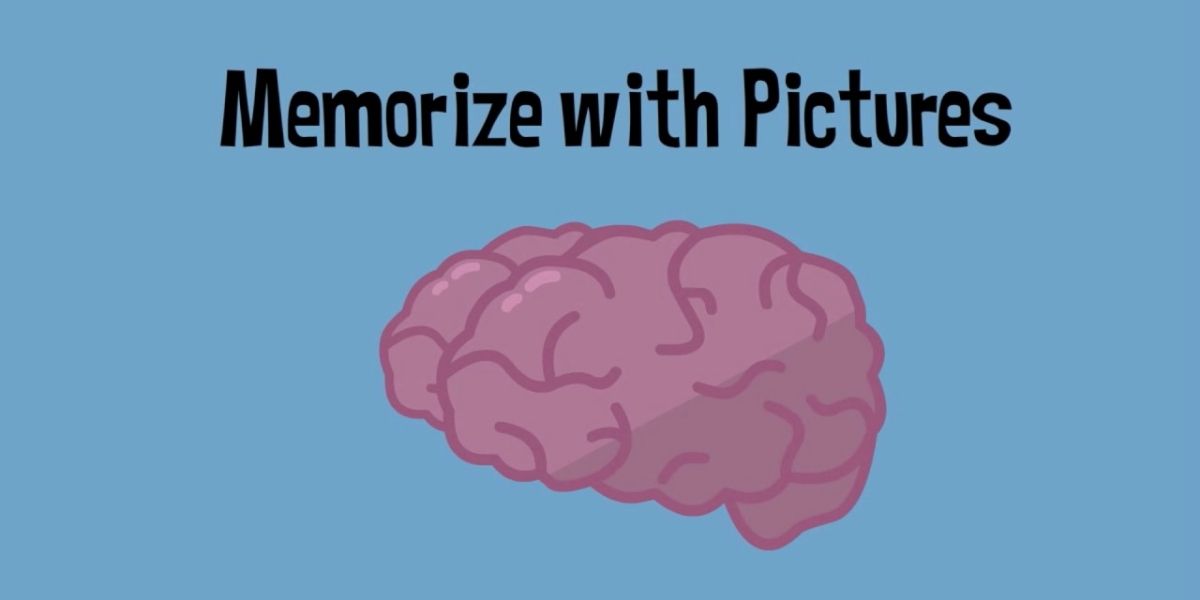
Your students might be visual types if they learn best by seeing or reading. When studying, they love to use notes, diagrams, charts, maps, and pictures. If your students are visual learners try using more pictures, videos, and other visual aids in your teaching. Color illustrations, diagrams, and flashcards can be very helpful.
Kinesthetic learners
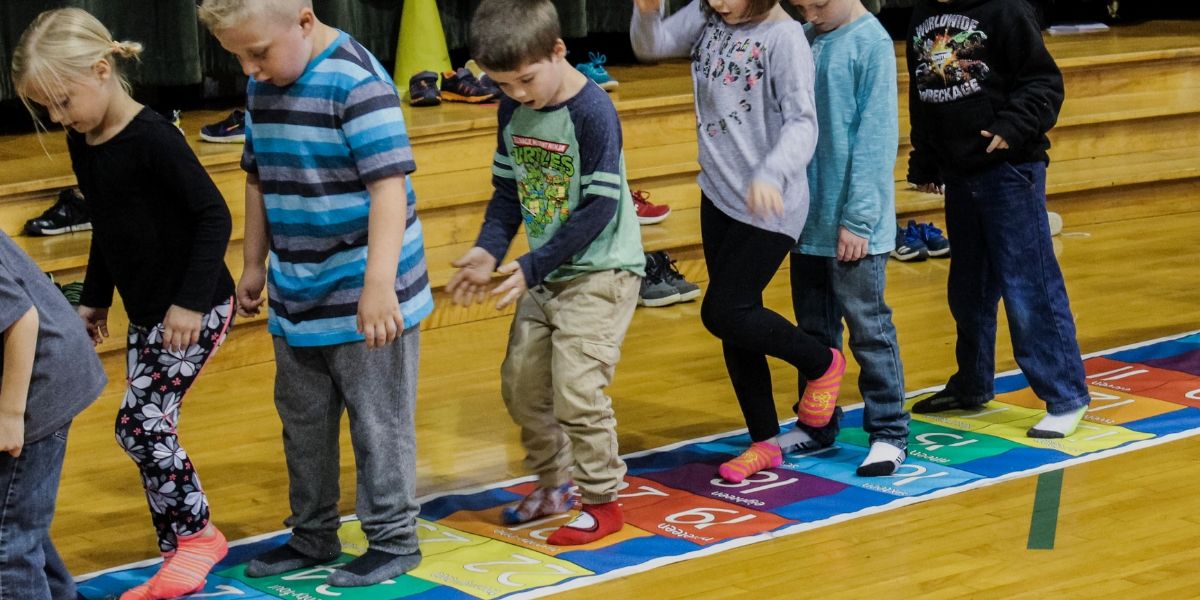
Kinesthetic learners love the opportunity to experience study material with movement, touch, and action. They learn by exploring and creating something and they excel in sports, art classes, theater sections, etc.
To inspire kinesthetic learners, try conducting experiments in class or taking field trips (for example visit botanical gardens for biology class, museums for history). You could also organize kids into groups to play quizzes and memory games. Any activity-based studying (role-playing, performing, making crafts) can be beneficial.
Auditory learners
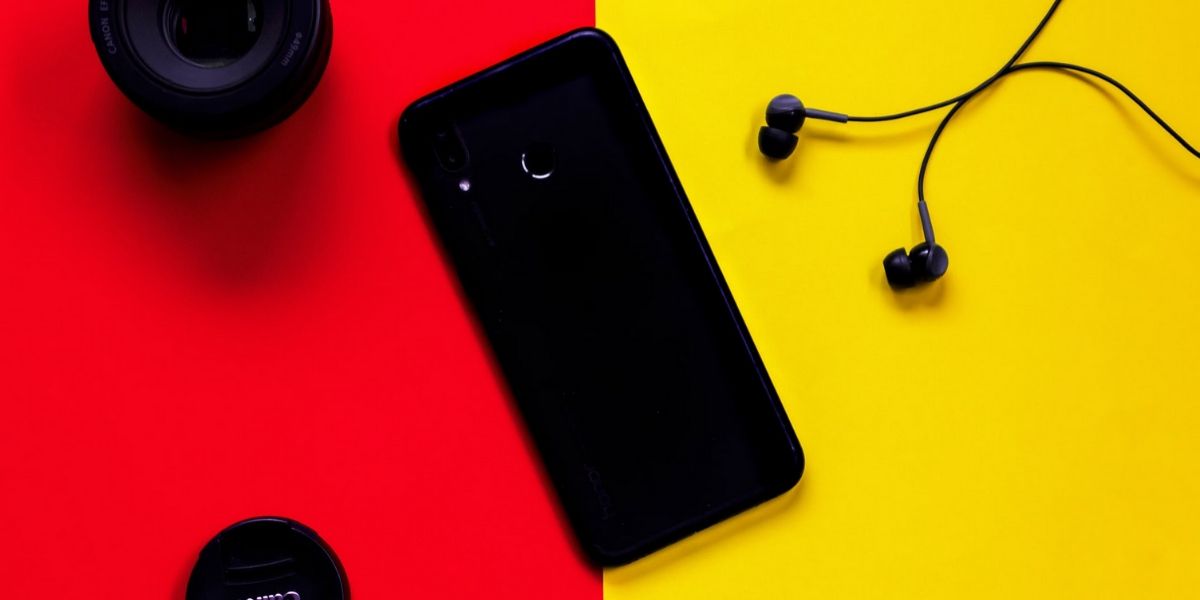
Students, who learn best by listening, benefit from spoken discussion and study groups. They love lectures and oral exams. The best thing for auditory learners is, then, presenting study material out loud. Use verbal repetition to help them memorize facts and encourage them to talk with other students by having group discussions. Suggest them to try audiobooks and use a tape recorder to track the lecture.
Adapt
The best teachers are flexible and can adapt to their students’ needs. You need to know what are the most successful strategies for teaching students with learning disabilities and change them to fit your class. Break down the learning process into bite-size chunks and decide in which order you should teach them. Take small steps and make sure to explain the relation and purpose of each step. When students understand the logic behind your action, they’re more likely to follow it.
Consider how study material can affect specific disabilities. For example, if you want to organize leadership activities for middle school students, make sure that everyone is comfortable with working in groups. Or, if some exercise requires written responses and you have a student with dysgraphia, change the “rules” of the game and ask students for oral responses.
Teaching special needs students in the regular classroom means inclusion. You should respect the student’s disabilities but don’t single out the student. He/she should feel like a part of the group. Let’s go through some strategies and instructions for students with learning disabilities to get more clarity on the matter.
Reading disability
Dyslexia, also called reading disability, is a learning disorder that involves difficulties with reading. It occurs due to problems with identifying speech sounds and learning how they relate to letters. A student with dyslexia has trouble decoding unfamiliar words, understanding the read words, following written direction, and identifying the main ideas of the book chapters.
Teaching students with learning disabilities to read should start with small steps. For covering book materials, give the students more time to comprehend the text. Break the text into small pieces and assign only a couple of them for each class.
Instruct the students to pre-read the material you’ll be covering in school, so they come more prepared. They can pre-read the material after school and repeat the process in the morning before school. Advise them to use highlighters of different colors to underline main ideas, key details, and confusing parts.
When they come to school, you can start by explaining the parts they didn’t understand. Then encourage them to ask and answer questions about the text. You can summarize together and allow them to record the summary with a tape recorder, so they can practice more at home.
Asking questions about the topic and reasons behind the reading will help students participate more. Also, rephrasing and putting the text in their own words will enable your students to become active rather than passive readers.
Rereading text is also very beneficial. It can allow students to apply new information in their attempt to read (aloud). Try to practice vocabulary more with students who have dyslexia. Learning new words by writing them on index cards and explaining the meaning orally will help them recognize these words in future texts.
Mathematic disability
Dyscalculia is a difficulty in understanding arithmetic, manipulating numbers, and performing mathematical calculations. Students with dyscalculia have problems with working with fractions, decimals, percentages, etc. They can’t visualize mathematical problems and recall the sequence of an operational process.
Help students understand math problems by linking them with concrete examples from students’ experiences. First, introduce the concept and then add the numbers. Try to use a lot of visual aids such as drawing and coloring math problems or videos explaining complicated procedures. Repeating this will help the students visualize the problems.
Math is all about repeating and remembering patterns. Before the test, provide a lot of opportunities for the students to practice. You could also permit the use of pocket calculators and index cards as study tools. Most importantly show the students that math isn’t scary and that with practise it’s possible to master it.
Expressive language disability
Students with expressive language disabilities have trouble completing the tasks that require using written language. They can’t express themselves clearly and precisely with rich vocabulary and complex sentence structures. Organizing thoughts and information in written forms becomes difficult, so they’re not able to carefully take notes and copy the material from the board.
With these difficulties can come dysgraphia. That’s the inability to write coherently. A lot of people have poor handwriting, but dysgraphia is more serious. The handwriting is unusually difficult to read, letters might vary in size and capital letters might be in the wrong places.
Early treatment and exercises can help the children to improve muscle memory. Students can try writing aids and the school can provide other forms of assistance such as the possibility to record lectures or hire a note taker. Written exams should be avoided, so it’s probably better to use a computer for testing or opt for oral exams.
Writing labs and tutoring can help students with expressive language disabilities. The students need more time with written assignments, so be understandable with due dates and encourage them to start early. Ask them to bring you a couple of pages before the final assignment to give them more advice.
If you’re not checking grammar and punctuation specifically, allow the students to use a word processor with spell checking. Suggest them to give the assignment to someone for proofreading and make corrections before you grade them. When possible ask for an oral response rather than the written ones.
Receptive language disability
Students with a receptive language disability have difficulties with processing information they get orally. They can’t differentiate between similar sounds, interpret oral presentations, concentrate on lectures, and take notes.
Encourage students to sit near the blackboard, so they can follow the lectures better. Give them a written outline of the materials that you’ll cover in the class. As you teach, draw a visual representation of the subject materials on the board and ask them to repeat important parts to make sure they don’t miss out. Try not to use metaphoric language and give concrete, literal examples. In the end, provide written copies of your lecture to be extra sure they didn’t miss anything.
Conclusion
Now you probably have a clearer picture of how to help students with learning disabilities in the classroom. Be patient, as all good teachers are, and we’re sure you’ll succeed. If you need ways to encourage your students more, check out these motivational activities for students.
01 HOUR 24 MINUTES
ESTIMATED TIME DESIGNING AND UPLOADING THIS ARTICLE
07 HOURS 19 MINUTES
ESTIMATED TIME RESEARCHING AND WRITING THIS ARTICLE
You Might Also Like

15 Cute Things to Do With Your Boyfriend at School
15 Cute Things to Do With Your Boyfriend at School WhatToGetMy Instructional Article Being in school does not have to weaken the bond you share with your boyfriend, instead, it can be made stronger by showing him affections in creative ways. With the following tips,

Gifts for architecture students
You are looking for the perfect gift for a son, daughter, or friend that will be attending architecture school or university for their first year. Or maybe you have a young child that is interested in drawing and designing buildings and you want to help
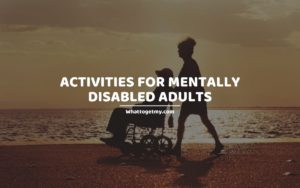
17 Activities for Mentally Disabled Adults and 10 for Physically Disabled Adults
Activities for Mentally Disabled Adults WhatToGetMy Instructional Article Helping mentally disabled and physically disabled adults through engaging and fun activities is crucial to their health and well-being. And in this article, you will find such fun and engaging activities for both the mentally disabled and
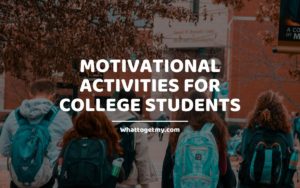
Motivational Activities for College Students
Motivational Activities for College Students WhatToGetMy Instructional Article A healthy community depends on active people who strive to achieve all their potentials. Most college students, however, are overwhelmed by work responsibilities and school tasks. They can’t reach their goals to improve themselves and they don’t
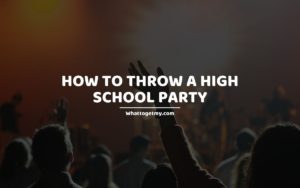
How to Throw a High School Party
How to Throw a High School Party WhatToGetMy Instructional Article Having a party can sound quite exciting and fun – but planning a party takes a lot out of you. There are so many pieces that need to fit together so that the party can

31 Common Things People Dislike and 4 Reasons Why People Hate You
31 Common Things People Dislike and 4 Reasons Why People Hate You. WhatToGetMy Instructional Article It is impossible to have an exhaustive list of things that people hate because stuff people hate is as myriad as there are people. However, there are those common things


